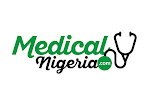The use of medications is known to be the major remedy for controlling blood pressure. However, lifestyle changes can ratchet it down too, and maybe even eliminate the need for drugs.
This article reveals natural ways pre-hypertensives, hypertensives and patients having chronic hypertension can reduce their blood pressure levels to a good range.
- Reduce Your Salt Intake
People with normal blood pressure, moderately high blood pressure, and full-fledged hypertension can substantially reduce their blood
pressure by cutting salt intake. The Dietary Guidelines recommend that people with hypertension limit their intake of salt to less than 1,500 milligrams (600 milligrams of sodium) a day.
We get most of our sodium from processed foods, so stick with whole foods. When you do eat foods with nutrition labels, be sure to check their sodium content.
- Eat bananas and Tomatoes
You probably know that eating too much salt can raise blood pressure as earlier discussed, but most people aren’t aware of the benefits of potassium, which counters sodium’s ill effects. Most don’t get enough of this mineral.
Some of the good sources include: bananas (422 milligrams each), a baked potato with skin (738 milligrams), orange juice (496 milligrams per cup), and nonfat or low-fat yogurt (531–579 milligrams per 8 ounces).
- Get Rid of Smoking
Quitting smoking may help you lower your blood pressure a bit, says Dr. Fletcher. And, of course, the other health benefits are countless. Smokers generally are at higher risk of developing hypertension.
- Lose That Weight
Losing some kilograms of weight can have a great impact on your blood pressure. Excess weight makes your heart work harder. Losing weight lightens your cardiovascular workload also. Find out the means and ways to cut down your weight.
- Don't Consume Caffeine
Even though coffee has some health benefits. It can cause short-term spikes in blood pressure, even in those individuals without hypertension. It is always a good idea to moderate your caffeine intake levels to about one cup of coffee per day.

Comments
Post a Comment
Premium, Professional CV Revamp and Rewrite services with a FREE Cover Letter from MedicalNigeria at #3,500! WhatsApp- 07038844295 to get Started!